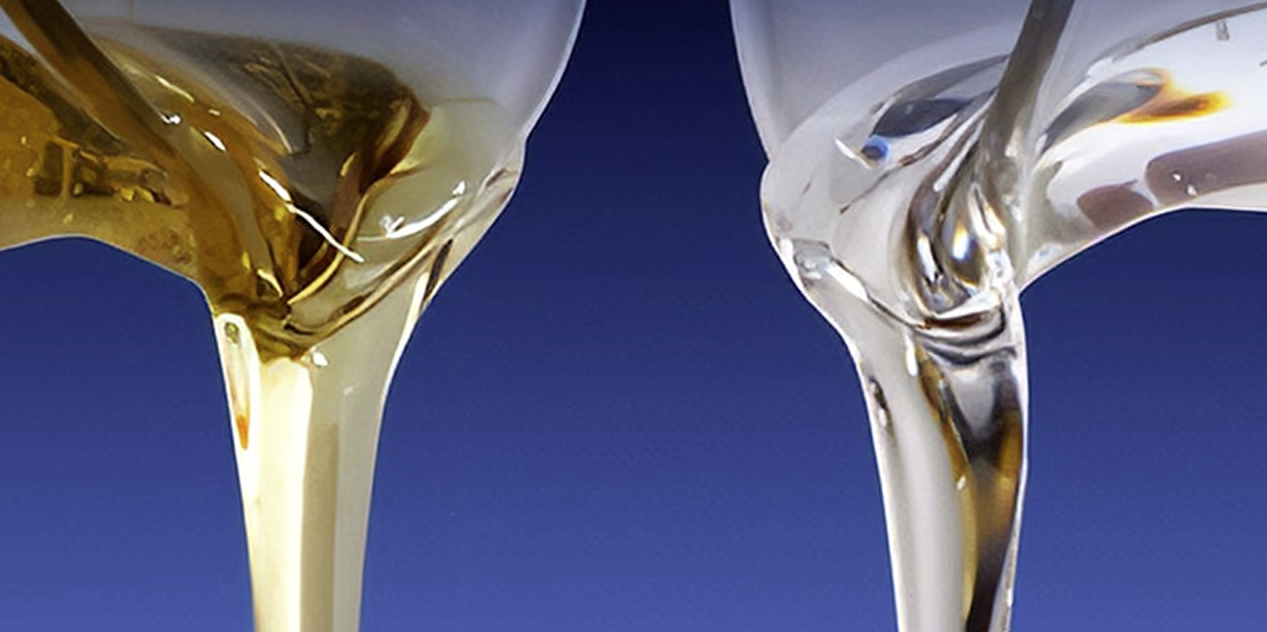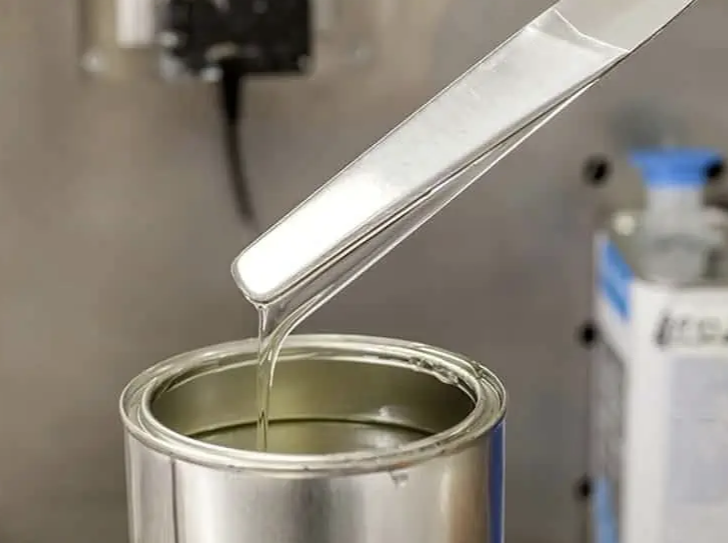(I) The concept of epoxy resin
Epoxy resin refers to the polymer chain structure contains two or more epoxy groups in the polymer compounds, belongs to the thermosetting resin, the representative resin is bisphenol A type epoxy resin.
(II) Characteristics of epoxy resins (usually referred to as bisphenol A type epoxy resins)
1. Individual epoxy resin application value is very low, it needs to be used in conjunction with the curing agent to have practical value.
2. High bonding strength: the bonding strength of epoxy resin adhesive is at the forefront of synthetic adhesives.
3. Curing shrinkage is small, in the adhesive epoxy resin adhesive shrinkage is the smallest, which is also epoxy resin adhesive curing adhesive high one of the reasons.
4. Good chemical resistance: the ether group, benzene ring and aliphatic hydroxyl group in the curing system are not easily eroded by acid and alkali. In seawater, petroleum, kerosene, 10% H2SO4, 10% HCl, 10% HAc, 10% NH3, 10% H3PO4 and 30% Na2CO3 can be used for two years; and in 50% H2SO4 and 10% HNO3 immersion at room temperature for half a year; 10% NaOH (100 ℃) immersion for one month, the performance remains unchanged.
5. Excellent electrical insulation: the breakdown voltage of epoxy resin can be greater than 35kv/mm 6. Good process performance, product size stability, good resistance and low water absorption. Bisphenol A-type epoxy resin advantages are good, but also has its disadvantages: ①. Operating viscosity, which appears to be somewhat inconvenient in the construction ②. Cured material is brittle, elongation is small. ③. Low peel strength. ④. Poor resistance to mechanical and thermal shock.
(III) the application and development of epoxy resin
1. The development history of epoxy resin: epoxy resin was applied for Swiss patent by P.Castam in 1938, the earliest epoxy adhesive was developed by Ciba in 1946, and the epoxy coating was developed by S.O.Creentee of the U.S.A. in 1949, and the industrialized production of epoxy resin was started in 1958.
2. Application of epoxy resin: ① Coating industry: epoxy resin in the coating industry requires the largest amount of water-based coatings, powder coatings and high solid coatings are more widely used. Can be widely used in pipeline containers, automobiles, ships, aerospace, electronics, toys, crafts and other industries. ② electrical and electronic industry: epoxy resin adhesive can be used for electrical insulation materials, such as rectifiers, transformers, sealing potting; sealing and protection of electronic components; electromechanical products, insulation and bonding; sealing and bonding of batteries; capacitors, resistors, inductors, the surface of the cloak. ③ Gold jewelry, crafts, sporting goods industry: can be used for signs, jewelry, trademarks, hardware, rackets, fishing tackle, sporting goods, crafts and other products. ④ Optoelectronic industry: it can be used for encapsulation, filling and bonding of light-emitting diodes (LED), digital tubes, pixel tubes, electronic displays, LED lighting and other products. ⑤Construction industry: It will also be widely used in road, bridge, flooring, steel structure, construction, wall coating, dam, engineering construction, cultural relics repair and other industries. ⑥ Adhesives, sealants and composites field: such as wind turbine blades, handicrafts, ceramics, glass and other kinds of bonding between substances, carbon fiber sheet composite, microelectronic materials sealing and so on.
(IV) The characteristics of epoxy resin adhesive
1. epoxy resin adhesive is based on the epoxy resin characteristics of reprocessing or modification, so that its performance parameters in line with the specific requirements, usually epoxy resin adhesive also need to have a curing agent with in order to use, and need to be mixed uniformly in order to be fully cured, generally epoxy resin adhesive known as the A glue or the main agent, the curing agent known as the B glue or curing agent (hardener).
2. reflecting the main characteristics of the epoxy resin adhesive before curing are: color, viscosity, specific gravity, ratio, gel time, available time, curing time, thixotropy (stop flow), hardness, surface tension and so on. Viscosity (Viscosity): is the internal frictional resistance of the colloid in the flow, its value is determined by the type of substance, temperature, concentration and other factors.
Gel time: the curing of glue is the process of transformation from liquid to solidification, from the beginning of the reaction of the glue to the critical state of the gel tends to solid time for the gel time, which is determined by the mixing amount of epoxy resin glue, temperature and other factors.
Thixotropy: This characteristic refers to the colloid touched by external forces (shaking, stirring, vibration, ultrasonic waves, etc.), with the external force from thick to thin, when the external factors to stop the role of the colloid back to the original when the consistency of the phenomenon.
Hardness: refers to the resistance of the material to external forces such as embossing and scratching. According to the different test methods Shore (Shore) hardness, Brinell (Brinell) hardness, Rockwell (Rockwell) hardness, Mohs (Mohs) hardness, Barcol (Barcol) hardness, Vickers (Vichers) hardness and so on. The value of hardness and hardness tester type related to the commonly used hardness tester, Shore hardness tester structure is simple, suitable for production inspection, Shore hardness tester can be divided into A type, C type, D type, A-type for measuring soft colloid, C and D-type for the measurement of semi-hard and hard colloid.
Surface tension: the attraction of the molecules within the liquid so that the molecules on the surface of the inward a force, this force makes the liquid as much as possible to reduce its surface area and the formation of parallel to the surface of the force, known as surface tension. Or the mutual traction between two adjacent parts of the surface of the liquid per unit length, it is a manifestation of molecular force. The unit of surface tension is N/m. The size of surface tension is related to the nature, purity and temperature of the liquid.
3. reflecting the characteristics of epoxy resin adhesive after curing the main features are: resistance, voltage, water absorption, compressive strength, tensile (tensile) strength, shear strength, peel strength, impact strength, heat distortion temperature, glass transition temperature, internal stress, chemical resistance, elongation, shrinkage coefficient, thermal conductivity, electrical conductivity, weathering, aging resistance, and so on.
Resistance: Describe the material resistance characteristics usually with surface resistance or volume resistance. Surface resistance is simply the same surface between the two electrodes measured resistance value, the unit is Ω. The shape of the electrode and the resistance value can be calculated by combining the surface resistivity per unit area. Volume resistance, also known as volume resistivity, volume resistance coefficient, refers to the resistance value through the thickness of the material, is an important indicator to characterize the electrical properties of dielectric or insulating materials. It is an important index to characterize the electrical properties of dielectric or insulating materials. 1cm2 dielectric resistance to leakage current, unit is Ω-m or Ω-cm. the larger the resistivity, the better the insulating properties.
Proof voltage: also known as the withstand voltage strength (insulation strength), the higher the voltage added to the ends of the colloid, the greater the charge within the material is subjected to the electric field force, the more likely to ionize the collision, resulting in the breakdown of the colloid. Make the insulator breakdown of the lowest voltage is called the object of the breakdown voltage. Make 1 mm thick insulating material breakdown, need to add the voltage kilovolts called insulating material insulation withstand voltage strength, referred to as withstand voltage, the unit is: Kv/mm. insulating material insulation and temperature have a close relationship. The higher the temperature, the worse the insulation performance of the insulating material. In order to ensure the insulation strength, each insulating material has an appropriate maximum allowable working temperature, in this temperature below, can be used safely for a long time, more than this temperature will be rapidly aging.
Water absorption: It is a measure of the extent to which a material absorbs water. It refers to the percentage increase in mass of a substance immersed in water for a certain period of time at a certain temperature.
Tensile strength: Tensile strength is the maximum tensile stress when the gel is stretched to break. Also known as tensile force, tensile strength, tensile strength, tensile strength. Unit is MPa.
Shear strength: also known as shear strength, refers to the unit bonding area can withstand the maximum load parallel to the bonding area, commonly used unit of MPa.
Peel strength: also known as peel strength, is the maximum damage load per unit width can withstand, is a measure of the line of force capacity, the unit is kN / m.
Elongation: refers to the colloid in the tensile force under the action of the length of the increase in the original length of the percentage.
Heat deflection temperature: refers to a measure of heat resistance of the curing material, is a curing material specimen immersed in a kind of isothermal heat transfer medium suitable for heat transfer, in the static bending load of the simply supported beam type, measured the specimen bending deformation to reach the specified value of the temperature, that is, the heat deflection temperature, referred to as the heat deflection temperature, or HDT.
Glass transition temperature: refers to the cured material from the glass form to the amorphous or highly elastic or fluid state transition (or the opposite of the transition) of the narrow temperature range of the approximate mid-point, known as the glass transition temperature, usually expressed in Tg, is an indicator of heat resistance.
Shrinkage ration: defined as the percentage of the ratio of shrinkage to the size before shrinkage, and shrinkage is the difference between the size before and after shrinkage.
Internal stress: refers to the absence of external forces, the colloid (material) due to the presence of defects, temperature changes, solvents, and other reasons for the internal stress.
Chemical resistance: refers to the ability to resist acids, alkalis, salts, solvents and other chemicals.
Flame resistance: refers to the ability of the material to resist combustion when in contact with a flame or to impede the continuation of combustion when away from a flame.
Weather resistance: refers to the material exposure to sunlight, heat and cold, wind and rain and other climatic conditions.
Aging: curing colloid in the processing, storage and use of the process, due to external factors (heat, light, oxygen, water, rays, mechanical forces and chemical media, etc.), a series of physical or chemical changes, so that the polymer material crosslinking brittle, cracking sticky, discoloration cracking, rough blistering, surface chalking, delamination flaking, the performance of the gradual deterioration of the mechanical properties of the loss of the loss of the can not be used, this phenomenon is called aging. The phenomenon of this change is called aging.
Dielectric constant: also known as the capacitance rate, induced rate (Permittivity). Refers to each “unit volume” of the object, in each unit of the “potential gradient” can save “electrostatic energy” (Electrostatic Energy) of the How much. When the colloid “permeability” the greater (that is, the worse the quality), and two close to the wire current work, the more difficult to reach the effect of complete insulation, in other words, the more likely to produce some degree of leakage. Therefore, the dielectric constant of the insulating material in general, the smaller the better. The dielectric constant of water is 70, very little moisture, will cause significant changes.
4. most of the epoxy resin adhesive is a heat-setting adhesive, it has the following main features: the higher the temperature the faster the curing; a mixed amount of the more the faster the curing; the curing process has exothermic phenomenon.
Shanghai Orisen New Material Technology Co., Ltd
M: +86 18683776368(also whatsapp)
T:+86 08383990499
Email: grahamjin@jhcomposites.com
Address: NO.398 New Green Road Xinbang Town Songjiang District,Shanghai
Post time: Oct-31-2024




